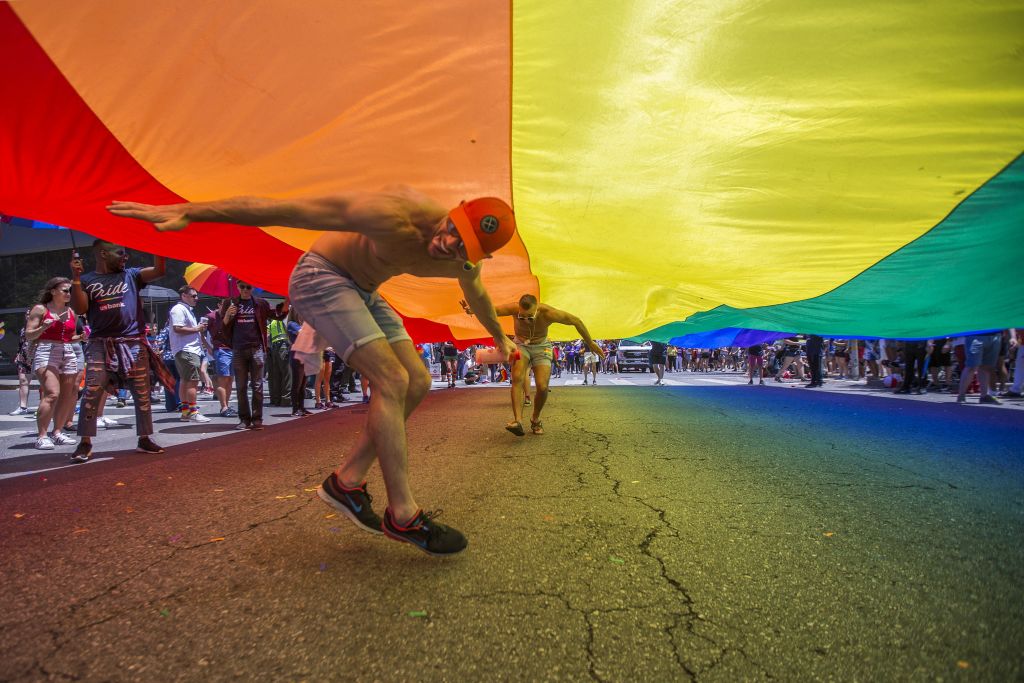
- Industry
L.A. Pride Parade – How It All Started
“As far as I’m concerned, granting a permit to a group of homosexuals to parade down Hollywood Boulevard would be the same as giving a permit to a group of thieves and robbers.”
With those words blocked Los Angeles Police Chief Edward M. Davis the plan of a gay parade in Hollywood, according to one of the trio of organizers.
That was in the spring of 1970. Three activists wanted to commemorate the infamous Stonewall Riots, a milestone event in the history of the fight for LGBTQ rights: Morris Kight, founder of the Gay Liberation Front LA, Reverend Troy Perry, founder of the Universal Fellowship of Metropolitan Community Churches, and Reverend Bob Humphries, founder of the United States Mission.
They wanted the parade specifically to take place in Hollywood, hoping the world-famous location would draw the most attention.
The plan was to organize a parade on June 28, 1970, exactly a year after the riots started in and around the Stonewall Inn on 51-53 Christopher Street in Manhattan. Marches on June 27, 1970, were already approved in other cities such as New York and San Francisco.
Those commemorations were intended more as rallies, marches, and demonstrations. But the Hollywood event was planned as a parade, a celebration, a display of pride.
A tough sell to the City of Los Angeles and especially the Police Commission.
There have been lingering tensions between the LA police and the LGBTQ community. Cops regularly raided bars and nightclubs with predominantly gay, lesbian or drag clientele.
On New Year’s Eve 1967, undercover LAPD officers raided the Black Cat Tavern in Los Angeles, a gay bar. Guests were beaten up and sixteen people were arrested. At a bar nearby, New Faces, the police attacked the owner, a woman. Two bartenders needed urgent medical care after they were beaten unconscious.
The violent actions of the police spurred open protests. On February 11, 1967, hundreds of people gathered in a demonstration which was organized by several activist groups, among them one called PRIDE (“Personal Rights in Defense and Education”). Police in riot gear dispersed the demonstration.
But the trio of activists was determined to get their parade, so they kept on fighting the Goliath in City Hall. Lawyers for the city quoted the so-called sodomy law that defined homosexuality as “acts against nature”.
It took another 15 years until this law in California was eliminated. And it was not even 20 years ago, 2003, when homosexual relations were effectively decriminalized in the US by the landmark ruling, US Supreme Court in Lawrence v. Texas.
Confronted with the argument the sodomy law would not be applicable as a roadblock to a peaceful parade, the Police Commission green-lighted the permit but not without a de facto stop sign added: they set the fees for the organizers to 1,5 million Dollars.
The ACLU stepped in with full force. Under pressure, the commission tried to settle on a $ 1,500 fee as compensation for the necessary police displacement. Finally, the case ended up at the California Superior Court which forced the City of LA to provide the appropriate protection for the parade free of charge as with any other demonstration.
That final go-ahead for the organizers came two days before the planned event date, June 28, 1970. According to eyewitnesses, that time loss actually turned out to be a pivotal force: The lack of preparation has been thoroughly compensated by a celebration of victory, by the exhilaration of a spontaneous party.
The playfulness and humor keep the high spirits of the Parade: dancing men in tiny Speedos next to “conservative gays” in business suits, drag queens, leathermen and women, gay policemen, proud parents of gay children waving rainbow flags, Blacks, Asians, Latinx, and even improvised floats – and the absence of any violence.
Many celebrities, usually shy about public appearances, joined the fun in the past. Among them are Cindy Lauper, Rita Moreno, Lisa Vanderpump, Patty Duke, Chelsea Handler, Demi Lovato, Margaret Cho, America Ferrara, Leisha Hailey, Katherine Moennig, Adam Lambert, Chris Rock, Hailee Steinfeld, and the ex-mayor of San Francisco, Harvey Milk.
Over the years the LA parade moved from Hollywood Boulevard to Santa Monica Boulevard in West Hollywood – but this year it will go back to Hollywood, taking over Hollywood Blvd, from Cahuenga to Highland, and on south to Sunset Blvd, ending back at Cahuenga, on Sunday, June 12th. Three Grand Marshals will lead the Parade: Sir Lady Java as the Community Grand Marshal, actor Mark Indelicato as the Celebrity Grand Marshal, and Paula Abdul as the newly created Icon Grand Marshal.
On Saturday, June 11th, the LA Pride in Park in Los Angeles’s Downtown State Historic Park, will open the festivities, with food vendors, art, drinks, a Ferris Wheel, the presence of Michaela Jaé, and music by Christina Aguilera and Brazilian Larissa de Macedo Machado, better known as Anitta.
To this day the parade remains one of the most popular events in Southern California.
And – times have changed – as in previous years, LA Sheriff Alex Villanueva will probably happily join the ride.